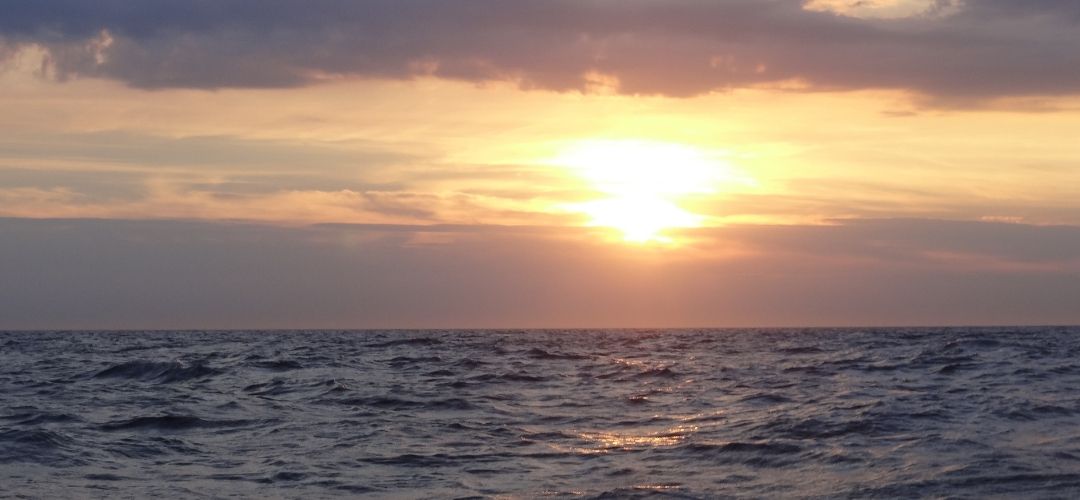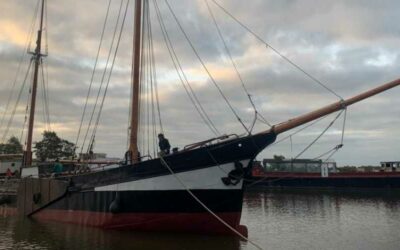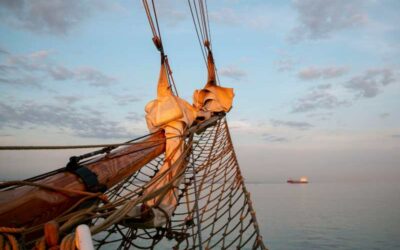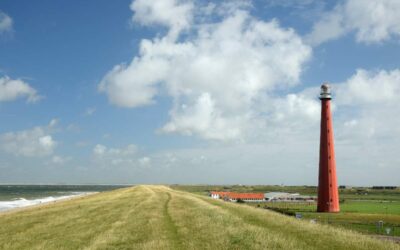The deck rocks with the swell of the ocean. Ropes creak, the sails strain and in the distance, sunrise stains the sky red.
The roads and the routine of home are far behind you.
The moment stretches as the wind drives the ship through the waves.
There are no prepackaged airline meals here, no recycled air or cramped seating. Just the wind, the waves, the open sky and the sailing ship.
It is a slow and steady journey to your destination.
Travelling as a passenger on a sailing ship is more than just a mode of transport. Your body can pause and your mind can reach the horizon.
The Journey
For many of us it can take a day or two to begin to relax on holiday, and often the journey to get there doesn’t help.
Airports can be chaotic places. Long walls of operators, with lines of waiting passengers snaking away from each desk. Lines for security, lines in duty free, the nerves of constantly checking the departure boards. There are worries about the weight of luggage or the acceptance of facing a break away with just what you can fit in carry on.
There is so much going on that there’s barely any time to enjoy the moment.
Enjoyment of the moment is one of the most important characteristics of slow travel.
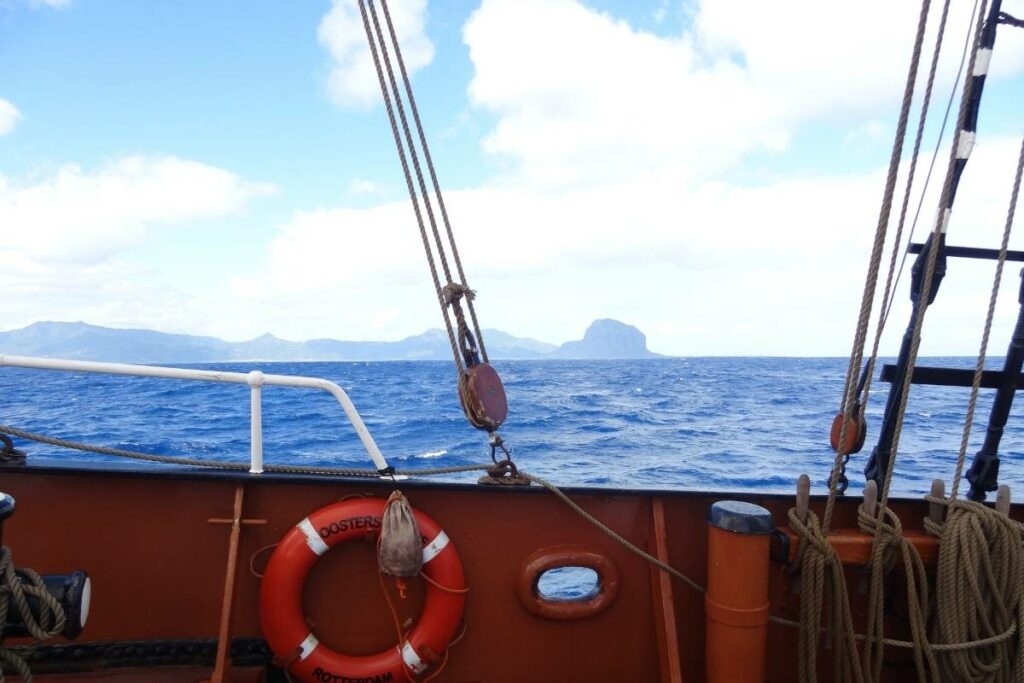
Wellbeing
The British National Health Service lists five considerations that affect wellbeing:
1) Connection with people.
Traveling under sail involves people. The ship is not solely run by computer – a crew and a group of trainees keep the sails trimmed and the ship in check.
Traveling under sail also involves time. The time to meet the crew, the trainees and the other passengers. To exchange stories under the moon, should you wish, or just the time and space for you and your own travel companions to share the experience.
2) Be physically active.
Passengers on board a sailing ship won’t be expected to climb the rigging, but they will be able to get involved if they want to.
If there is no desire to learn the ropes there is still a ship to enjoy and a fresh breeze to fill the lungs.
3) Learning new skills.
So much of life today is fast paced. Some might say that even the skill of relaxation is in short supply.
Slow travel allows passengers the time and the space to relax, indeed, it is a place to remember how to relax.
4) Give to others.
Not only is a slow travel journey good for the soul, it is good for the planet and the future too. Sailing is social. You work and care for others around you.
5) Pay attention to the present moment.
As the sky turns red at sunrise or sunset, a passenger standing in the bow would be almost unable to do anything but enjoy the moment. A moment that would be hard to forget.
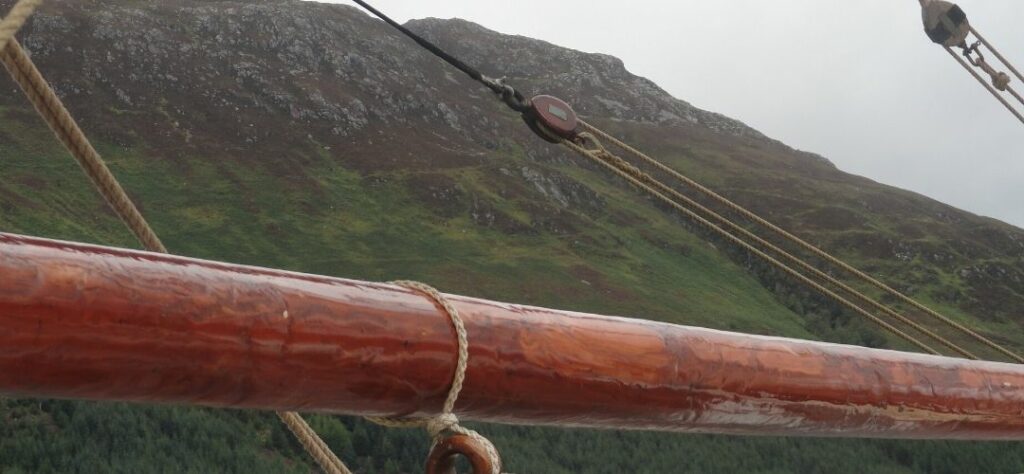
Find comfort in the rhythms of the sea
Life in the digital age is fast paced and it rarely switches off.
Much has been made in the media about the pressures that social media and constant connection can put on mental health. There is often a mental toll taken when comparing your everyday life to another person’s highlight reel.
More people than ever before are scheduling breaks in their online lives and silencing their emails out of hours.
Physical and mental breaks are vital to our health.
Slow travel on a tall ship will take passengers far beyond their usual experience.
The slow travel journey is not only sustainable with a low environmental footprint, but can be an integral part of the holiday itself.
It is not a rush to the destination; it is an ease into relaxation or a peaceful journey home.
EcoClipper passengers will be able to join EcoClipper ships as they travel from port to port. They will be able to go on short, medium or long journeys. As the sustainable travel and sail cargo industry expands, the price of such a journey will inevitably drop and the faith and understanding that the general public have for travel on board a tall ship will increase.Yoga, meditation and other relaxation techniques are starting to become more and more popular. As the sail industry of the 21st century develops the beauty and appreciation of slow travel will certainly grow too.
